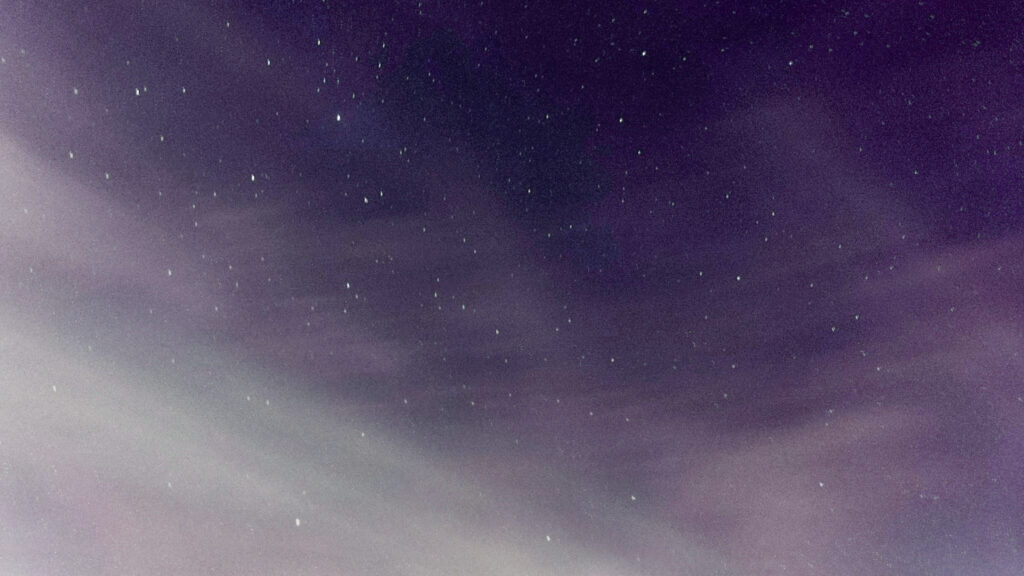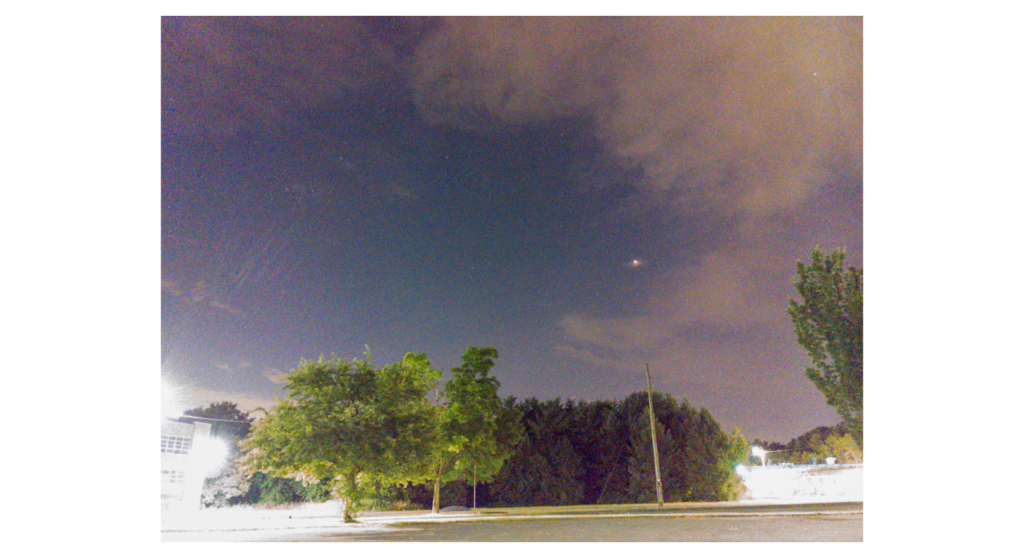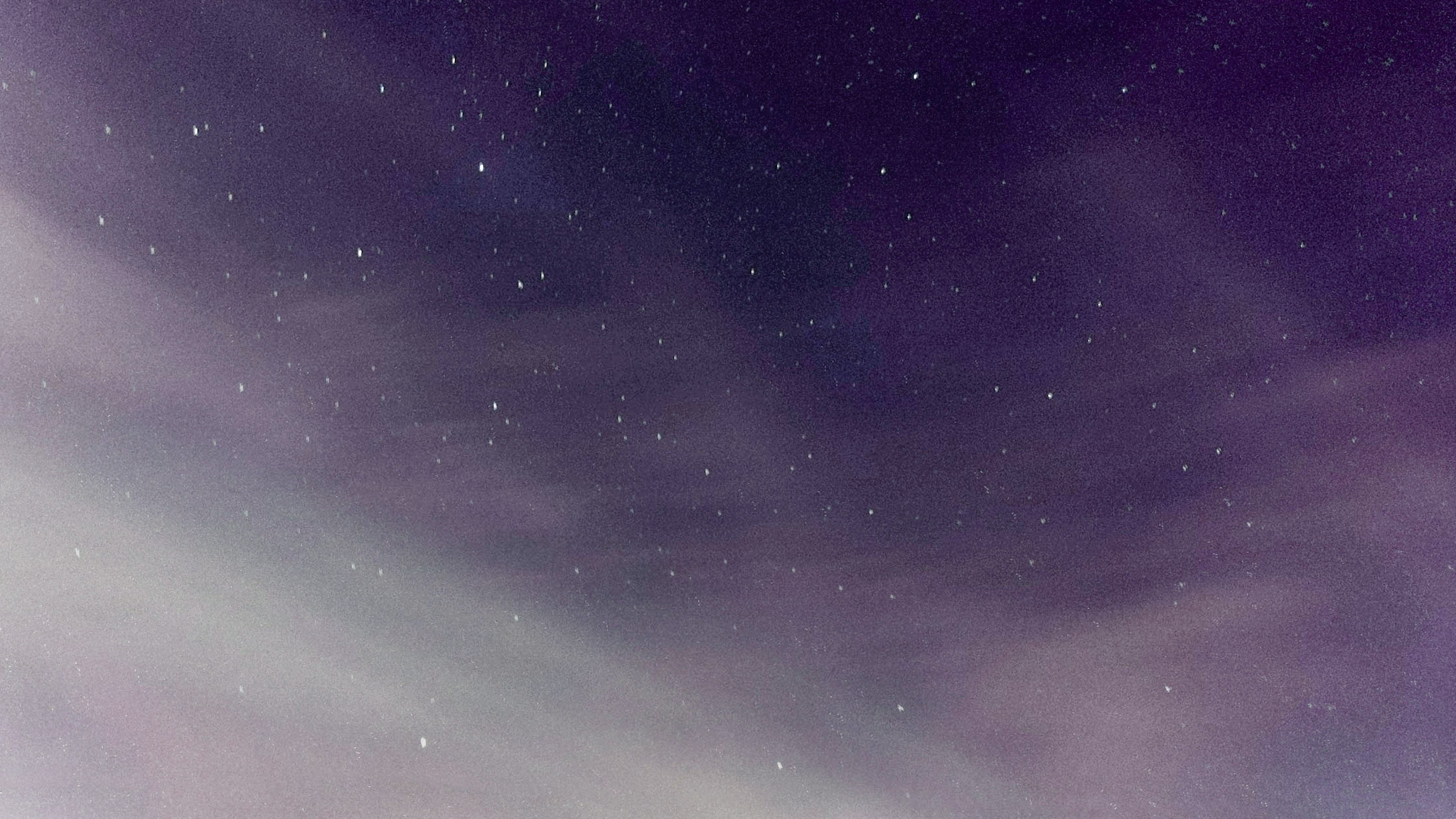

I have begun to experiment with some more advanced mobile photography. I have been using my phone to do almost all of my photography over the past year. While I have access to decent camera equipment, I am fascinated by the progress in the capabilities of a modern cameraphone, and with pushing the limits on what is possible with such imaging equipment. And because of the limitations of a cameraphone, taking this picture ended up being quite an adventure.
The first problem I needed to overcome was that my phone was limited to a 4 second exposure. There is a balance to be struck when determining shutter speed for a long exposure. In general, The slower the shutter speed, the lower you want the ISO (sensitivity of the sensor). When these settings are out of balance, the image may be over or under exposed, and may have a lot of sensor noise. This can be seen with the image below which I tried taking last year. I set the ISO to 3200 and the shutter speed maxed out at 4 seconds, and the resulting image is mottled with red, blue, and green spots.

The best way to combat the issues of sensor noise is to take several exposures and then stack and align them together. Then by taking the average of the the stack for each pixel you can smooth out a lot of that noise. This is actually what the Google Pixel phones are doing when you use the Night Sight mode. But their software does this automatically whereas I decided to take a much more manual approach.
This is the method I used to take the photo at the top of this post. I started with seven exposures of about 60 seconds each and with a very low ISO of about 50-100. The reason I am not positive on the settings used is because by default the driver for the camera does not allow exposures for that long. In order to get that to work, I had to root my phone and sideload in a custom driver that had those restrictions lifted. And since the driver was being forced to behave in a way that it was not supposed to, it did not necessarily do the exposure for the time I had specified. I am also not convinced that it was actually operating at 50 ISO. It claimed that it was but the camera driver tends to pull some shenanigans here as well. I am pretty sure that all this voided my warranty but that is okay with me, I think it was worth it. I cannot take credit for figuring this out myself. I just happened to find the instructions and a pre-modified driver over on the XDA Developer Forums which is a place where people talk about modding their smartphones, among other things.
Once I had a handful of pictures, I loaded them into Photoshop and began the meticulous process of aligning all the images so that the stars lined up. Without this crucial step, the stars would have appeared as faint streaks across the sky. I actually want to take a picture like that sometime, but that was not the goal on this particular night. Once I completed the alignment, Photoshop has an option to merge several layers and average their pixels for a single flat image. The program also has an auto-alignment utility as well, but it was unable to align my images so I had to do it the old-fashioned way.
The last steps were to crop out the edges which would leave evidence of the multiple images, and do the final post-processing to bring out the details and color that I wanted. In all it took me a couple of hours to produce this picture because I also took several ~10 minutes worth of exposures from a few different angles each. When I first set up I saw a cloud moving in and was trying to get some good shots in before it obscured the sky, but I am glad the clouds moved quickly that night. They actually ended up enhancing the final image and provides some interesting features to look at besides the stars since my camera was pointed up and away from any landmarks.
As with much of my obsession with mobile photography, this was partially an experiment in whether I could get a decent long exposure from my phone. But it was also done to gain experience with Photoshop and stacking exposures so that I could better understand the process. It is my goal in life to never stop learning. That desire to understand how everything works is one of the few intensely strong drives I have in life. This pursuit of photography has allowed me to explore my creativity while also learning about the technical aspects of the craft. Of course with the soon-to-be released Google Pixel 4 this whole process might be possible with the press of a button with its enhanced Night Sight, but at least I will know how it works!
